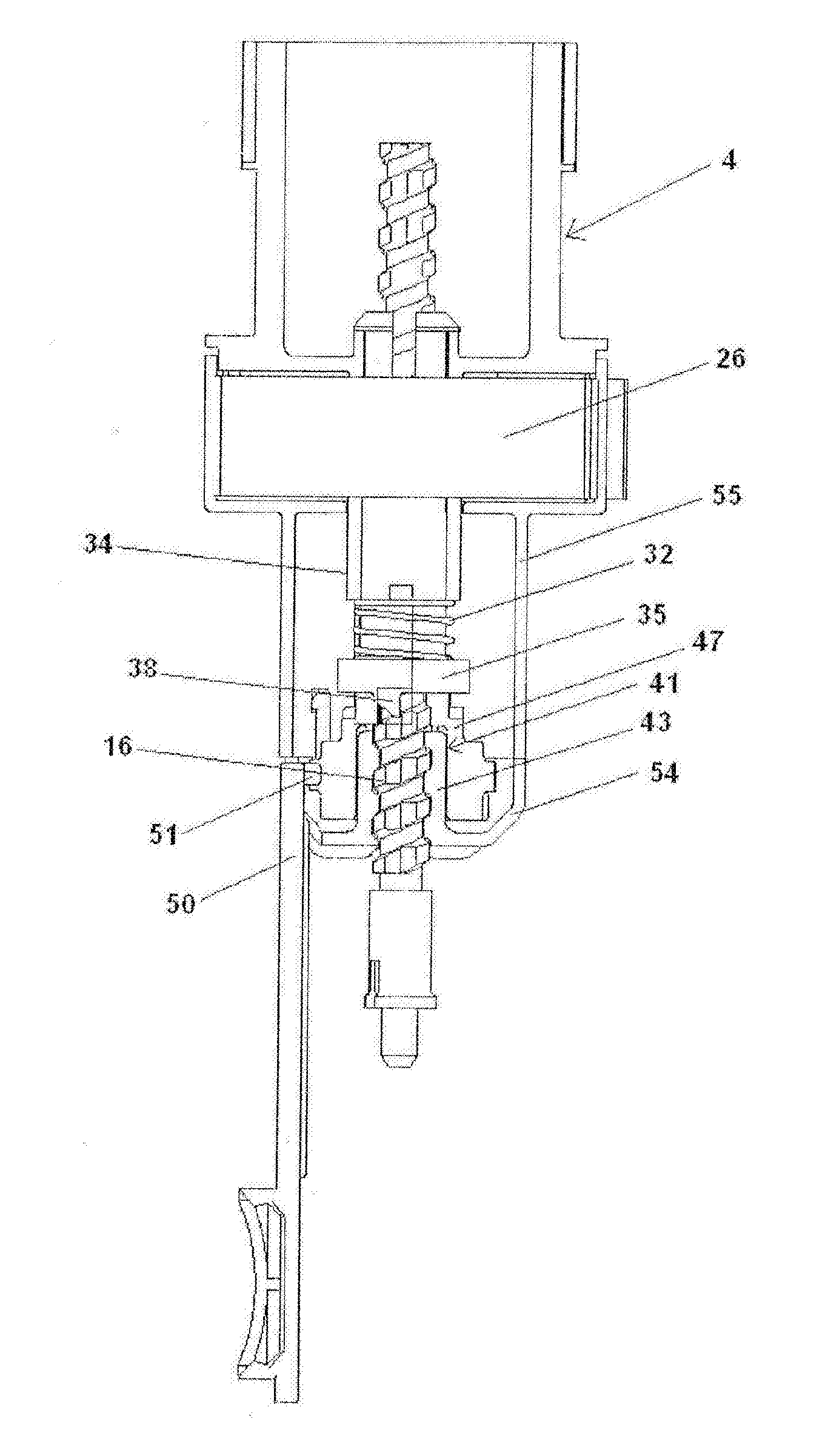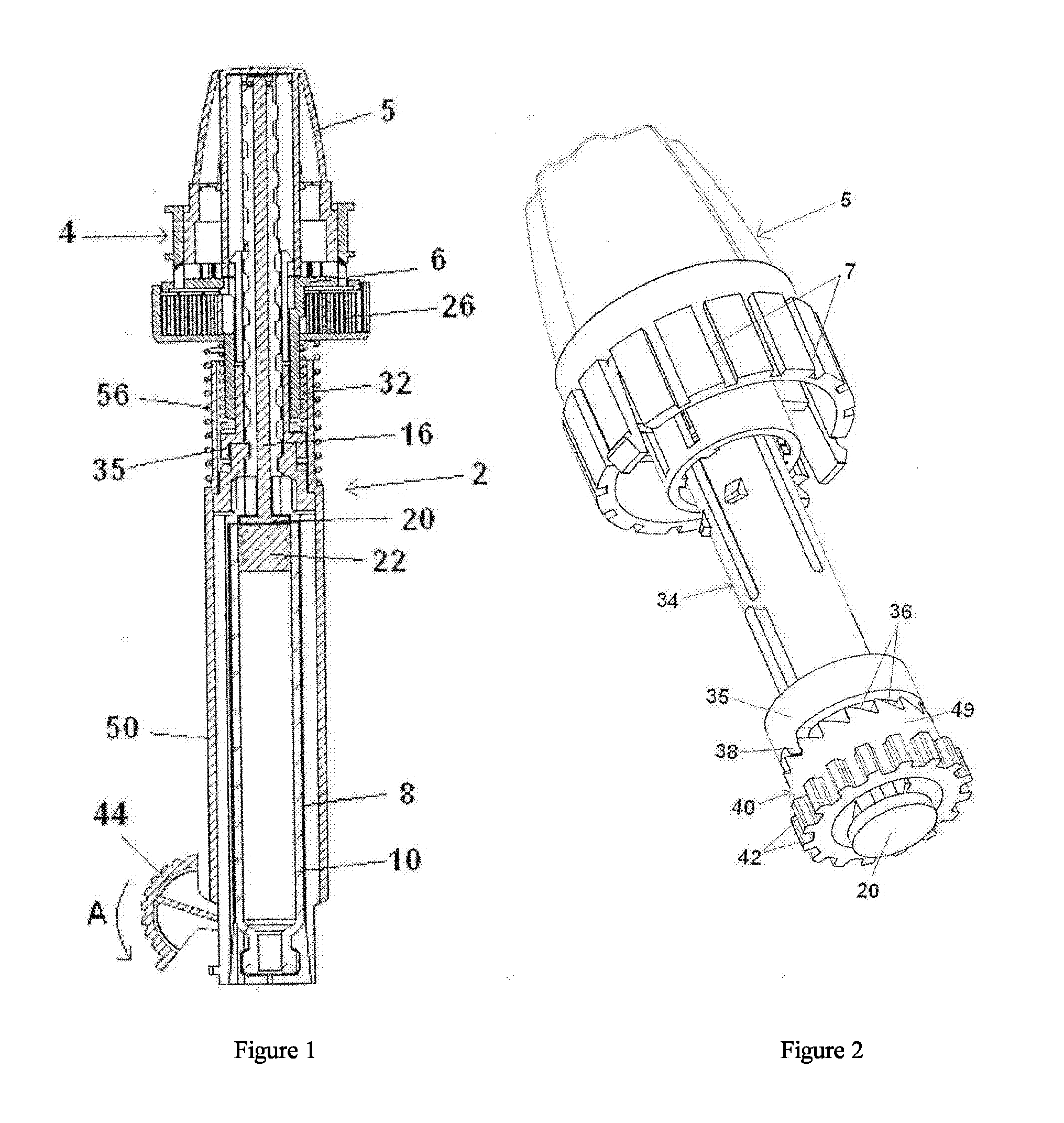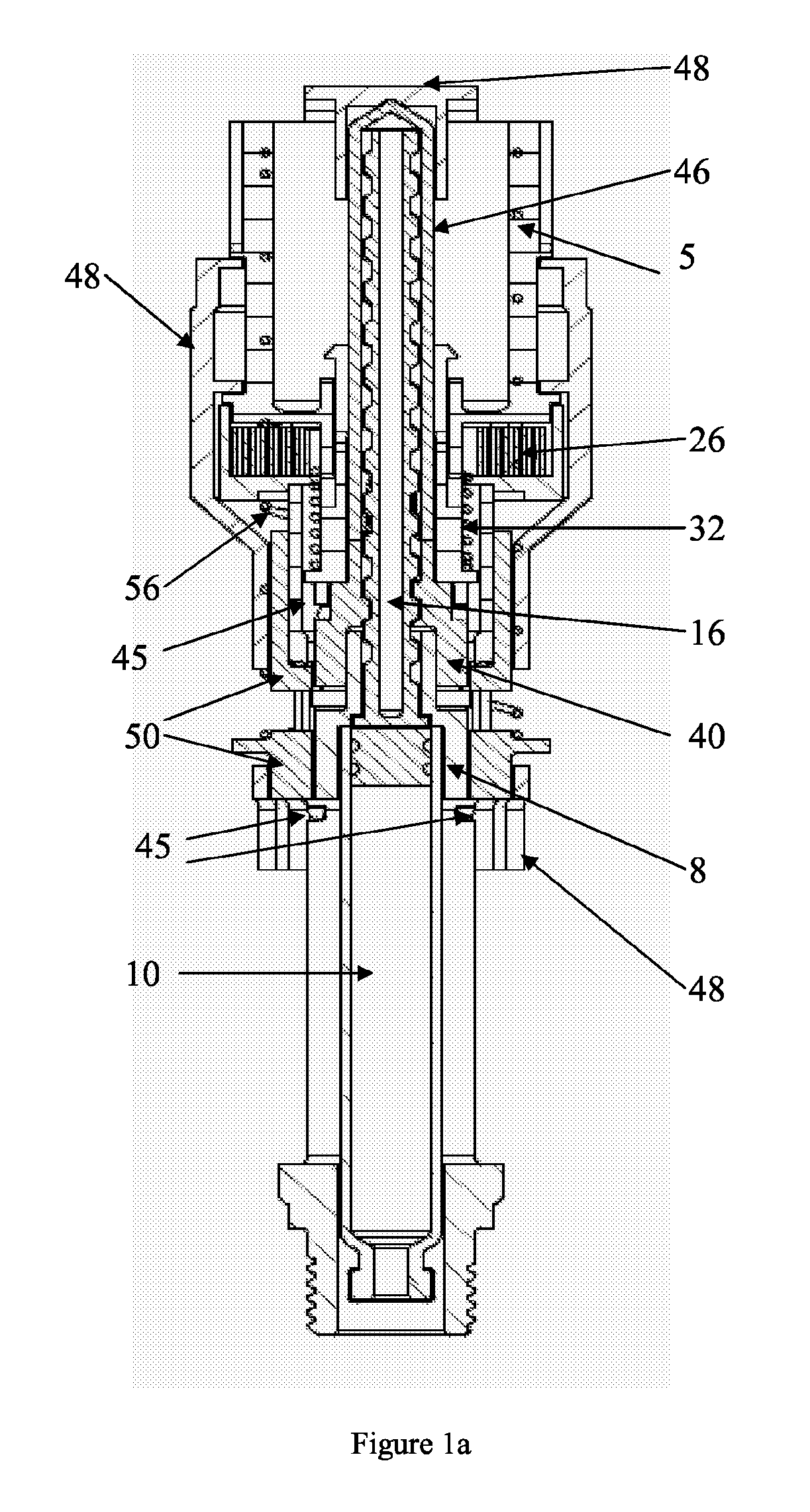Device for Delivering Medicament
a technology for delivering devices and medicaments, which is applied in the direction of medical atomisers, intravenous devices, other medical devices, etc., and can solve the problems of large devices that are not handled as easily, substantial risk of cartridge damage, and large risk of cartridge damag
- Summary
- Abstract
- Description
- Claims
- Application Information
AI Technical Summary
Benefits of technology
Problems solved by technology
Method used
Image
Examples
first embodiment
The Delivery Device of the Present Invention
[0063]FIGS. 1-6 refer to a configuration of the delivery device wherein the plunger rod is adapted to be in a non-rotating state during medicament delivery. The delivery device 2 comprises in its distal end a dose setting member in the form of a dose wheel 4 and in its proximal end a cartridge housing 8, coupled to an outer cover 48, comprising a cartridge 10. The cartridge 10 is intended to be filled with the liquid medicament to be administered to the patient and the delivery device is thus provided with means in order to be connected to a suitable medicament administrating member, provided with corresponding means (not shown). The medicament administrating member is preferably a mouth or nasal piece, which the patient puts in his mouth or nose, respectively, whereby a metered dose of medicament is inhaled by the patient when the delivery device is set in a medicament delivery state, which will be described in further detail below. The m...
second embodiment
The Delivery Device of the Present Invention
[0096]The delivery device 100 of the second embodiment, shown in FIGS. 10-14, comprises in its proximal part a cartridge housing 101, coupled to an outer cover 108, comprising a cartridge 103, as seen in FIG. 10. The cartridge 103 is intended to be filled with the liquid medicament to be administered to the patient and the delivery device is thus provided with means in order to be connected to a suitable medicament administrating member, provided with corresponding means (not shown). The medicament administrating member is in the second embodiment of the present invention preferably a needle for the injection of a liquid medicament into the body of the patient, wherein the liquid can have a low as well a high viscosity, but may also be for instance be a mouth or nasal piece, which the patient puts in his mouth or nose, respectively, whereby a metered dose of medicament is inhaled by the patient when the delivery device is set in a medicame...
PUM
 Login to View More
Login to View More Abstract
Description
Claims
Application Information
 Login to View More
Login to View More - R&D
- Intellectual Property
- Life Sciences
- Materials
- Tech Scout
- Unparalleled Data Quality
- Higher Quality Content
- 60% Fewer Hallucinations
Browse by: Latest US Patents, China's latest patents, Technical Efficacy Thesaurus, Application Domain, Technology Topic, Popular Technical Reports.
© 2025 PatSnap. All rights reserved.Legal|Privacy policy|Modern Slavery Act Transparency Statement|Sitemap|About US| Contact US: help@patsnap.com



